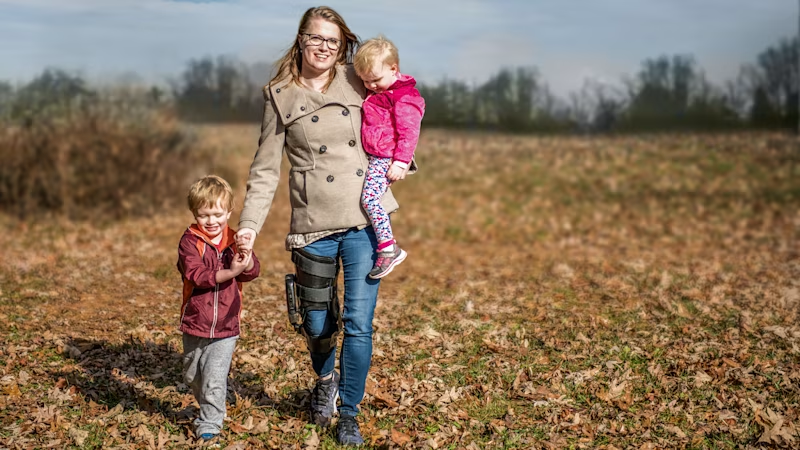Osteoporosis
Osteoporosis (bone atrophy) is a syndrome defined by an ongoing and continuous decrease in bone mass. The skeleton becomes increasingly unstable and porous, and the risk of bone fractures is elevated.
Osteoporosis: causes, symptoms and treatment
Osteoporosis (bone atrophy) is a syndrome defined by an ongoing and continuous decrease in bone mass. The skeleton becomes increasingly unstable and porous, and the risk of bone fractures is elevated. While osteoporosis affects the entire skeleton, certain areas may be more severely affected.
In older people, the bone mass decreases along with the frequent decrease in physical activity. With osteoporosis, the bone metabolism is disturbed so that this natural bone atrophy accelerates and an imbalance develops between bone formation and bone loss.
Ottobock supports and orthoses

Causes
Osteoporosis is caused by altered bone metabolism or insufficient, mechanical or muscular deformation of the bone materials. The muscular stimulus that deforms the bone via the tendons decreases with age. The speed of movement and performance also decline with age. A decrease of the muscle cross-section is therefore often observed at the measurement site as well when measuring the bone mass.
Secondary osteoporosis is caused by diseases that disturb the metabolism and/or the hormone balance. Other possible triggers are taking medications for long periods of time or excessive alcohol and nicotine consumption. Primary osteoporosis occurs without any discernible direct causes. Depending on the timing of its onset, it is called post-menopausal osteoporosis that occurs after the start of menopause or senile osteoporosis, which may occur starting at around 70 years of age.
Symptoms
The symptoms of osteoporosis are minor as long as there is only a slight decrease in bone mass. However, spontaneous fractures can occur as it progresses, especially on the vertebral bodies. This results in pain, a decrease in body height and further disturbances of the locomotor system. Physical activity is often reduced as a result, leading to a reduction in muscle performance and coordination – individuals can experience more frequent falls simply for this reason.
Diagnosis
A detailed discussion of the patient’s medical history is followed by a physical examination with several tests of mobility, muscle strength, muscle performance, balance and coordination. Radiology procedures include at least a DXA/PQCT measurement and evaluation of the bone mass/bone density as well as the muscle cross-section where applicable. X-rays can provide information on existing fractures.
Therapy
Therapy depends on the cause and form of osteoporosis. It is initially designed to influence the bone metabolism in order to prevent fractures. Acute treatment is required for any fractures that have already occurred due to osteoporosis. This also means alleviating the pain associated with the fracture. Treatment for osteoporosis also aims to alleviate or eliminate any permanent pain or discomfort.
Without treatment, bone atrophy progresses so the bones become increasingly brittle. For this reason, it’s important to start osteoporosis therapy as soon as possible.
Orthoses can help stabilise and straighten the spine. They improve the body posture and activate the torso muscles.
De volta às atividades cotidianas: três passos para uma órtese Ottobock
- Aqui você encontrará uma visão geral de todas as órteses e suportes que podem ajudá-lo. Leve a lista com você para a próxima consulta médica.
- Converse com seu médico sobre qual órtese é mais adequada para seus sintomas e condição. O seu médico pode então receitar-lhe a órtese apropriada.
- Leve sua receita a uma empresa de suprimentos médicos. Eles vão lhe dar sua nova órtese e ajustá-la para caber nas medidas exatas do seu corpo.
